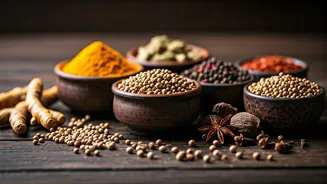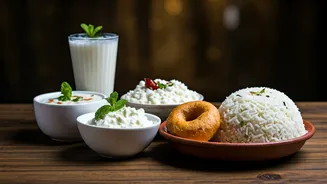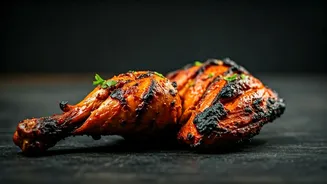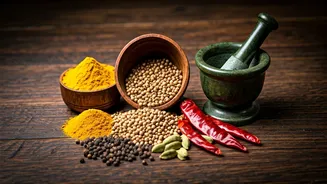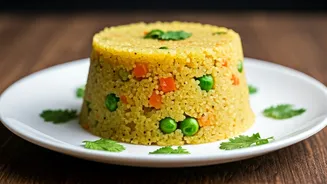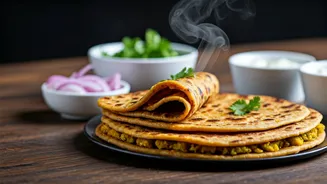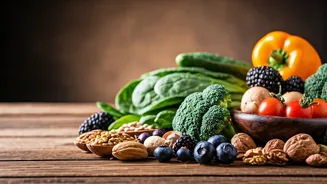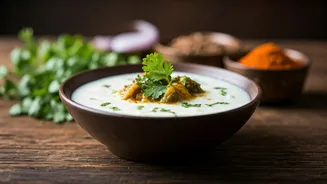Spice Origins & Heritage
India's spice trade has a long and rich history. Spices like cardamom, cinnamon, and cloves have been integral to Indian culture and cuisine for centuries.
These spices not only enhance the taste of dishes but also carry significant cultural weight, playing roles in religious practices, traditional medicine, and social customs. They were once highly valued commodities, drawing traders and explorers from across the globe to India's shores. The spice trade influenced the country's economy and its interactions with the world. Over time, spices from India spread to different parts of the globe, introducing and popularizing Indian cuisine's distinctive characteristics. The origins of Indian spices are deeply intertwined with the country's agricultural heritage. Farmers have cultivated these crops for generations, refining the methods of planting, harvesting, and processing that define the quality of the final product. Understanding the origins of Indian spices gives appreciation for the intricate journey that each spice takes, from the plant to the plate.
Chili Peppers: A Fiery Kick
Chili peppers, an essential element of Indian cuisine, contribute a spectrum of heat levels, from mild to blazing. The different varieties of chili peppers, such as the Kashmiri chili and the Bhut Jolokia, provide varied flavour profiles, adding depth to dishes. Kashmiri chilies are celebrated for their vibrant colour and moderate heat, often used to create rich sauces and gravies, whereas the Bhut Jolokia, one of the world's hottest, adds extreme heat. The use of chilies varies regionally, with some regions favouring high heat while others prefer a milder touch. Beyond their heat, chilies add a layer of complexity to Indian dishes, providing both flavour and colour. They can be dried, powdered, or used fresh, each form offering its unique influence on the dish. Chilies, essential in tandoori dishes, curries, and regional specialties, have become synonymous with the bold and exciting flavors of Indian cooking.
Turmeric: Golden Goodness
Turmeric, the golden spice, is a cornerstone of Indian cooking and also holds deep cultural and medicinal significance. Curcumin, the active compound in turmeric, is known for its antioxidant and anti-inflammatory properties, making it a crucial ingredient in traditional Ayurvedic medicine. In Indian cuisine, turmeric is used to add vibrant colour to dishes. It also enhances the flavour. It is an essential component of curries, lending its earthy notes and subtle bitterness to the mix. It is used in daily cooking and also during rituals. Turmeric is used for health-related benefits. Beyond its culinary and medicinal uses, turmeric is a symbol of prosperity and purity, often playing a role in marriage ceremonies and religious practices, representing well-being and happiness. It has a significant impact on Indian culture, and its usage reflects its importance.
Cumin and Coriander
Cumin and coriander, often used together, are two foundational spices in Indian cuisine. Cumin, with its warm, earthy flavour, is a key ingredient in many curries, lentil dishes, and spice blends, such as garam masala. It adds depth and complexity to savoury preparations. Coriander, derived from the seeds of the cilantro plant, offers a bright, citrusy note, balancing the richness of the cumin. It also has a distinct flavour. Both spices are roasted, ground, and incorporated into dishes in a variety of ways. Cumin and coriander are a key part of the flavour profiles of many Indian dishes, from the simplest vegetable stir-fries to the most complex curries. They are also used in various regional cuisines. These spices showcase how a couple of ingredients can impact the flavour of a dish.
Garam Masala's Magic
Garam masala, meaning 'warm spice blend,' is a fragrant mixture of ground spices, commonly used in Indian cuisine. The composition of garam masala varies by region and household, but it usually includes cinnamon, cardamom, cloves, and nutmeg, along with black peppercorns, cumin, and coriander. It is a carefully balanced blend. Garam masala is added toward the end of cooking to preserve its complex flavours and aromas. It imparts a warmth and depth. It is also used in a wide range of dishes, from vegetarian curries to meat preparations. Garam masala reflects the spice culture of India. It represents regional diversity in the use of spices.
Cardamom's Aromatic Elegance
Cardamom is an aromatic spice, highly valued in Indian cooking for its distinct flavour and fragrance. The pods, containing small black seeds, offer a complex flavour profile with hints of citrus and floral notes. It is also used in both sweet and savoury dishes. Cardamom is a key ingredient in chai, adding its fragrance to the spiced tea. It also enhances the flavour of many desserts, such as kheer (rice pudding) and various sweets. Cardamom is available in green and black varieties, each offering a distinct flavour profile. Green cardamom is more commonly used in sweets and lighter dishes, while black cardamom lends a smoky note to heartier preparations. Cardamom's presence is a symbol of elegance in Indian cooking, its aromatic touch adding complexity and sophistication to a wide range of dishes.
Other Spices to Explore
Beyond the essential spices, Indian cuisine features a variety of other flavorful ingredients. These spices add depth and nuance to Indian dishes. Star anise, with its licorice-like flavour, is sometimes used in biryanis and other slow-cooked dishes. Fenugreek seeds, with their slightly bitter taste, add a unique element to curries and lentil dishes. Asafoetida, a pungent resin, often used in a powdered form, enhances the flavours of vegetarian dishes. Saffron, one of the most expensive spices, lends a vibrant colour and delicate aroma to dishes like biryani and sweet dishes. Each spice adds its characteristic elements, reflecting the country's diverse culinary traditions and making Indian cuisine a rich tapestry of flavours.
